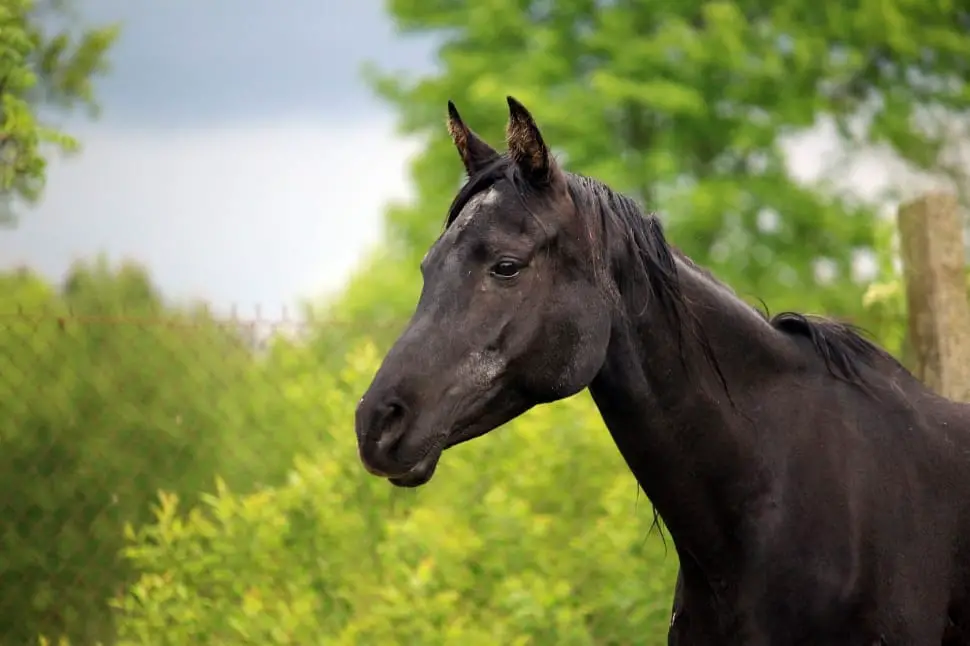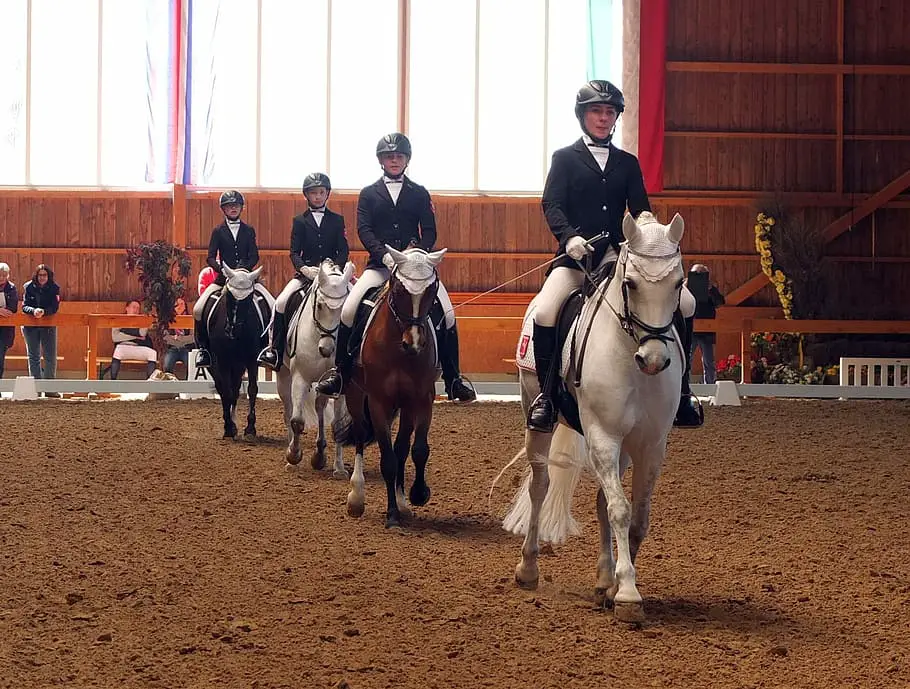Last Updated on July 13, 2020 by Allison Price
With different breeds of horses in the world, only a few are then suited for dressage. A dressage horse and its rider must be always connected. This creates precise movements from a horse while following its rider’s commands.
Before, dressage was a skill for the battlefield. Horses needed to move in confined spaces. And they responded to the soldier’s command immediately. Now, disciplining of horses remains an equestrian art.
Choosing a horse for dressage is not an easy task. A rider should be able to pick certain attributes on the horse. Also, a rider should be knowledgeable about horse training.
Dressage is to let the horse follow the rider’s instructions in a graceful, agile, and natural way. That’s why only the finest and best-trained horses can take part in dressage events. We will now list the best horses for dressage with a brief description.
Westphalian Horse
Westphalian is an origin from German breeds. They are usually referred to as Warmbloods. They grow in about 1.78 m or 70 inches, making them one of the tallest horses. They are usually known to have a beautiful body with long harmonious limbs. They are athletic, beautiful, and have a desirable temperament. They are also docile with a sweeping stride. They excel in dressage competitions and show jumping. If you’re looking for big-bodied horses, then Westphalian Horse is for you.
Andalusian Horse
The Andalusian horse is also called Pure Spanish Horse. It is a native from Pura Raza Española. This type of breed has a special predisposition during Dressage. It is because of its exceptional intelligence and learning ability. They also have a very strong, gracious, and easygoing temperament. They are very energetic and docile most of the time.
The Andalusian horse has a medium-sized head and medium length of its neck. Their intelligence can be then seen in their eyes. Its back is muscular and strong and its hindquarters are powerful. The combination of its qualities makes them one of the best horses for dressage.
Dutch Warmblood

The Dutch Warmblood is a combination of two native Dutch Breeds. These are the Gelderlander and the Groningen. The breeders combine the best characteristics of each breed to produce special offsprings. Their offsprings were further refined with Thoroughbreds. This resulted in athletic horses and good sloping shoulders. This gives them flatter and longer action, longer necks, and shorter backs. The Dutch horses’ scope and stamina were then improved by Thoroughbred.
Dutch Warmbloods usually stand over 16 to 17 hands. Their most prominent colors are bay and chestnut. Yet, blacks and greys are also seen in the field. White markings on the face and legs are also common with Dutch Warmbloods.
The Dutch Warmblood is a very versatile horse. They excel in a top-level competition such as in dressage and show jumping. They are also popular in eventing and even carriage driving. Their calm and even temperament makes them easy to work with. They are willing to turn a hoof and about to do anything.
Hanoverian Horse
This breed of horse is another German breed usually for dressage competitions. They are strong horses and have been then bred to be trainable. It is a factor which is very important for sports such as dressage.
They can be as tall as 70″ but usually settle around the 65″ high. They have long strides and extraordinary jumping activities. This makes them perfect for sporting activities. Hanoverian Horses are brave, brilliant, and reasonable. They have won several golds in the World Equestrian Games.
Arabian Horse

Another popular horse breed used for Dressage is Shagya Arabian Horse. Shagiya is a pure breed and they show outstanding performances in equestrian competitions. They stand in about 1.63 m – 5’4”, an average size compared to other horses.
Although average in size, Shagiya legs are strong with dry joints. They also have big, expressive eyes in a relatively small head. It is then supported by a long, slender neck. Their ears are also small.
This type of horse is best for dressage because they are docile and friendly. Shagiya gives off the sensation of a happy and vigorous horse.
Holsteiner Horse
The Holsteiner is an old German breed bred by the monastery. The Holstein is an elegant and powerful breed. They have seen enormous success as a modern Olympic sport horse. Also, they perform well in any dressage events.
The Holsteiner is a medium-sized horse. They have an athletic build and strong muscles capable of heavy work. Holsteiners are a large, deep-bodied horse averaging between 16 and 17.1 hands high. They are well-muscled with a graceful arching neck and a short flexible topline. They have strong well-angled joints with the hind legs stepping deep under the body. They are of two general types of Holstein horse: the Classic and Modern. The Classic type is heavier with larger bones. Modern types are lighter and more refined.
Lusitano Horse
This breed originated in the Iberian Peninsula and is before used as a warhorse. Lusitano has a friendly and willing status for their temperament. They are very brave and generous in their efforts, wise and docile, those are perfect for dressage.
They stand in about 1.63 meters or 5’4”. Although average in size, Lusitano tends to stand out in equestrian competitions. Such horses are sometimes used for breeding dressage horses as sire horses.
This breed has a few in common with Andalusian Horse. The head resembles the Andalusian horse but with a shorter neck and a more compact look.
How to Train a Dressage Horse
Any horses can be good for Dressage competitions at the prelim or novice level. Its progress depends on its connection and training with its rider. As long as there are trust and communication between, anything is possible.
During training, it is important to develop your horse’s flexibility, responsiveness, and balance. This makes them stronger and more pleasurable to ride.
Training a horse is a long process. You must be able to teach them basic commands. This includes Stop, Go, Left, Right, Back, and so on. Teaching these may help them build balance, symmetry, and strength. The next step is to teach them how to halt, rein, walk, trot, and canter with a rider. This is then followed by the bends and other lateral movements.
A dressage horse does not only have to learn the riding part. They should also know how to stand still during grooming. A well-groomed horse gets higher points in a dressage competition.
In general, most riders used negative reinforcement. They remove the aversive to strengthen behavior. This means adding pressure to let the horse do the right thing. Usually, it results to fear and is painful to your horses.
Others use positive reinforcement which uses treats as rewards. You strengthen the behavior by adding appetitive. This is something the horse likes and always wants to work for. This training takes longer as the rider needs to think of ways on how to make the activities interesting.


